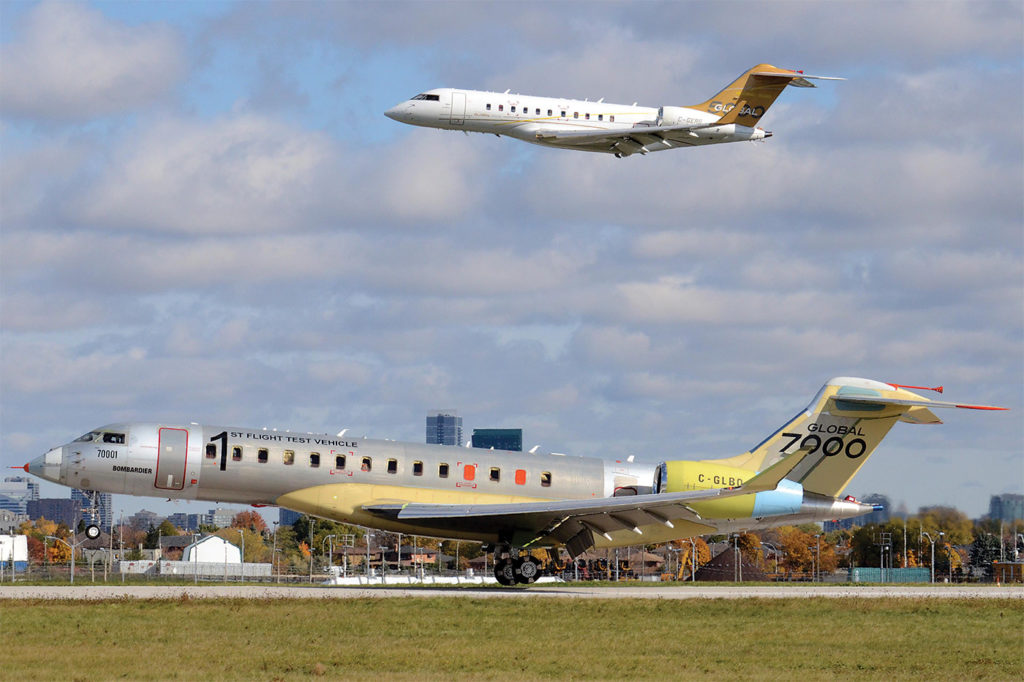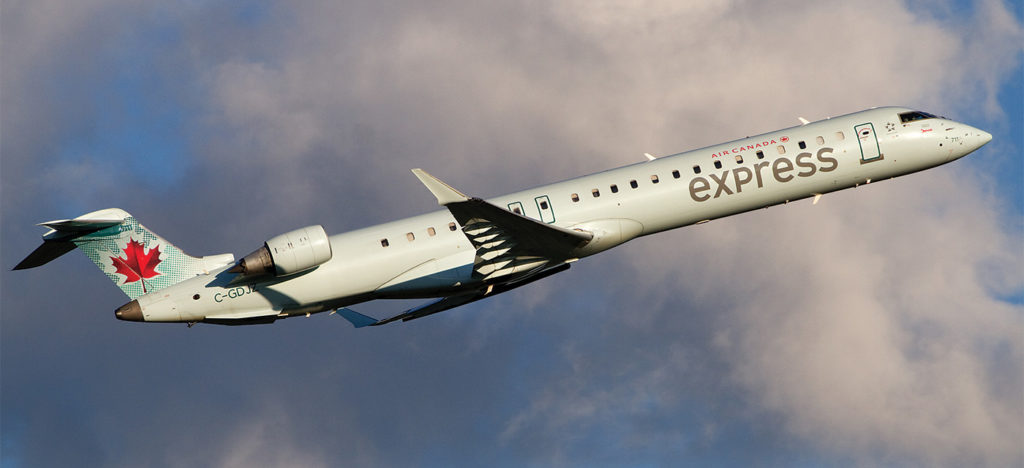Estimated reading time 6 minutes, 37 seconds.
The new alliance between Airbus and Bombardier has enhanced the credibility and viability of the C Series single-aisle commercial aircraft, but the jury is still out on how this deal will impact Bombardier Commercial Aircraft’s (BCA’s) other regional aircraft business.

customers. With its jet-like speed, the Q400 is capable of replacing older turboprops and jets.
Garret Rodgers Photo
The C Series stretched Bombardier’s resources for many years, pulling management attention away from marketing, selling and improving the CRJ regional jet and Q400 turboprop.
Bombardier’s latest commercial aircraft forecast says 5,750 new regional aircraft worth US$240 billion will be delivered over the next 20 years in the 60- to 100-seat market.
That’s a huge business opportunity, but Bombardier will face fierce competition from Embraer, ATR and new competitors like Mitsubishi’s regional jet.
To gain the upper hand, BCA needs to invest in product development (and perhaps sign on a new business partner) to reach a tipping point where it will capture a large market share.
Program Milestones
This year marks the silver anniversary of Bombardier’s purchase of de Havilland Canada (DHC) from Boeing (with the Ontario government) and the delivery of the first 50-seat Canadair Regional Jet Series 100 (CRJ100) to Lufthansa CityLine in 1992.
In the first decade of the millennium, Bombardier expanded its portfolio with new derivative aircraft. The first high-speed, 70-seat Q400 turboprop entered service in 2000; the 70-seat CRJ700 regional jet in 2001; the 86-seat CRJ900 in 2003; and the 100-seat CRJ1000 in late 2010.

High fuel prices and declining yields shifted airline demand to the larger aircraft, resulting in the last CRJ200 airline delivery in 2007 and Dash 8 Q200/Q300 delivery in 2009.
Since 2000, Bombardier has delivered 1,375 large regional aircraft, split 60/40 between CRJs and Q400s, but has been outsold by its competitors in recent years.
Market Dynamics
Bombardier champions “right sizing” aircraft capacity to passenger demand to achieve high yields and profitability.
The BCA 2017-2036 market forecast says the small regional aircraft (20 to 60 seats) market is eroding because of a lack of new aircraft models and pilot shortages. As a result, airlines are “up-gauging” to larger 60- to 100-seat regional aircraft with more seats and lower unit costs.
For example, in the United States, the 50-seat regional jet fleet is being replaced by 76-seat jets. The country’s large fleet of regional jets grew by 2.5 times between 2006 and 2016.
The BCA forecast expects that 2,200 small regional aircraft (20 to 60 seats) will retire in the next 20 years (to less than 400 aircraft), while the large regional aircraft fleet will more than double from 3,300 to 6,950 aircraft (with 5,750 new deliveries and 2,100 retirements).
U.S. scope clauses are now aligned in seat gauge, quantity and weight limits across all major airlines, but Bombardier believes that current scope restrictions on seat count (maximum 76 seats, maximum aircraft weight 86,000 pounds and number of aircraft) will not change in the immediate future.
Nevertheless, BCA forecasts that the top five markets for large regional aircraft will be North America (1,400 deliveries), Europe (1,000), East Asia and Oceana (900), China (900) and Latin America (500).
In emerging travel markets like China, East Asia and Oceana, and India, more large turboprops and regional jets are needed to feed hubs, connect secondary and tertiary cities, and link important origin and destination markets.
CRJ NextGen Family
Every five seconds, a CRJ lands or takes off somewhere in the world, with the aircraft now in service with 120 different customers, including 25 added in the past five years.

The CRJ program directly employs more than 1,000 people. The CRJ NextGen family (CRJ700, CRJ900 and CRJ1000) is built on a single final assembly line at Mirabel Airport. Bombardier builds the wings and cockpit in Montreal, the mid-fuselage in Belfast and the rudder in Querétaro, Mexico. RUAG Aerostructures makes the aft fuselage in Switzerland and Germany, and Aernnova makes the elevators and horizontal and vertical stabilizers in Mexico.
The new Atmosphere interior for the CRJ will feature contemporary styling, larger business class overhead bins, new mood lighting, and a large optional passenger with reduced mobility (PRM) lavatory.
Recent CRJ900 NextGen deliveries went to American Airlines, China Express, Chorus Aviation (Air Canada Express) and CityJet (SAS), and new CRJ1000s found homes at Air Nostrum.
Bombardier said CRJ900 NextGen direct operating costs are seven per cent less than the Embraer E175, and the escalation of CRJ700/900/1000 “A” and “C” maintenance checks to 800 hours and 8,000 hours will reduce costs even further.
Other CRJ advantages include cockpit commonality across the 50- to 100-seat class (meaning lower pilot training costs) and the lowest operating weight in the 60- to 100-seat class. However, the E175 began outselling the CRJ900 after Embraer extended the wingspan by nine feet to reduce the fuel burn.
New competitors include the Embraer E-Jet E2 and Mitsubishi MRJ, which are powered by the PW1000, the same engine as the C Series. Re-engining the CRJ with another engine might be a competitive response.
Q400 NextGen
About 560 Q400 turboprops have been delivered from Bombardier’s Toronto factory to 60 different customers, including 15 added in the last five years.

The Q400 program directly employs 800 people at the Bombardier plant in Toronto in engineering, program management, manufacturing and final assembly, and hundreds more in customer support.
Bombardier makes the Q400 cockpit and wings in Toronto. The fuselage and empennage are made by Shenyang Aircraft (SAC), a subsidiary of Aviation Industry Corporation of China (AVIC) and shipped to Toronto for final assembly.
In 2016, unionized workers approved Bombardier’s plan to transfer Q400 wing production to Mexico and the cockpit to China, in order to save $2 million and thereby make the Q400 price competitive with the ATR 72, reported The Toronto Star.
While that hasn’t happened yet–the cockpit and wings are still made in Toronto–Bombardier remains committed to reducing manufacturing costs.
With its jet-like speed, the Q400 is capable of replacing older turboprops and jets. Recent deliveries went to Chorus Aviation (Air Canada Express), WestJet Encore and Porter Airlines in Canada, Island Air in Hawaii, Luxair in Europe, Ethiopian Airlines in Africa and Philippine Airlines, ANA Wings and Ryukyu Air Commuter in Asia, plus leasing companies.
In July, SpiceJet of India became the launch customer for the new 90-seat Q400, with a firm order for 25 aircraft and 25 options. The new aircraft has 14 more revenue seats than the ATR 72-600 (at 28-inch pitch).
The proposed 90- to 100-seat Q400X with a 10-foot longer cabin is on hold, but could be launched to block ATR’s entry into the 90-seat market.
To compete with new generation turbofans, Pratt & Whitney Canada has been developing the fuel efficient Next-Generation Regional Turboprop (NGRT) engine with 5,000 to 7,000 horsepower for the 90-seat class.

